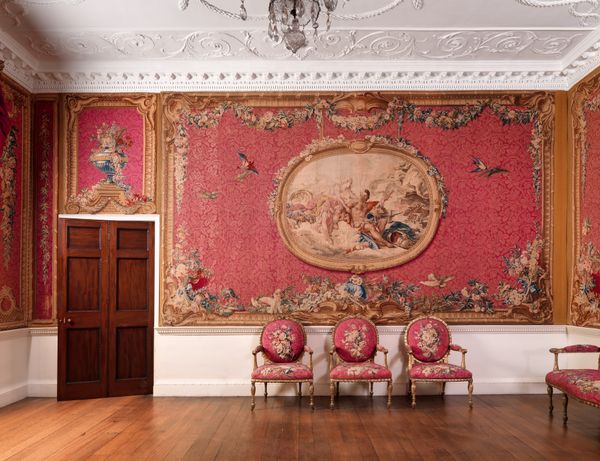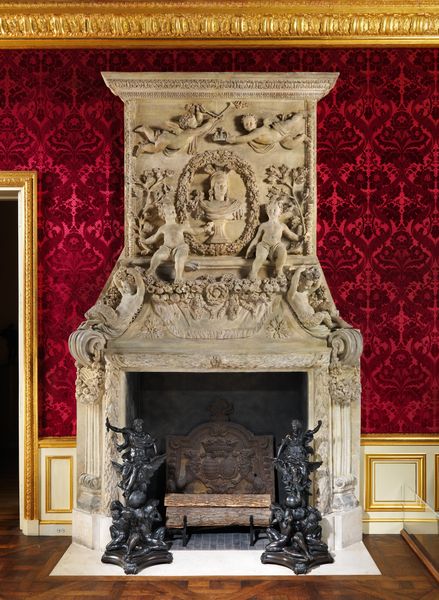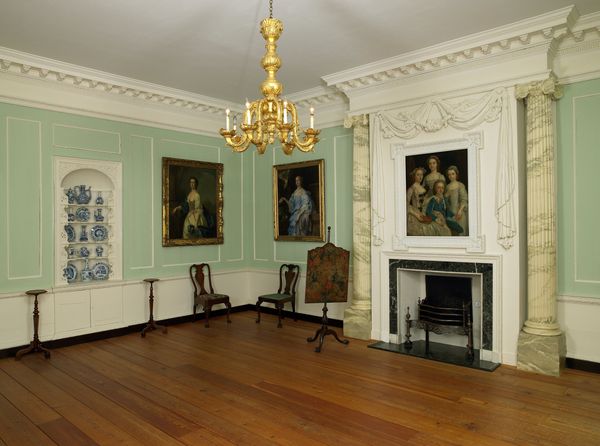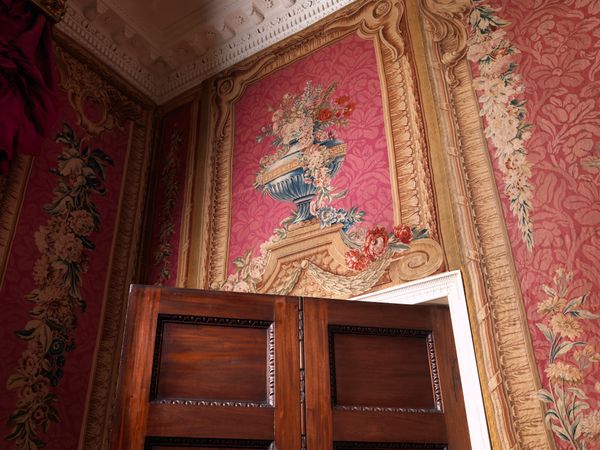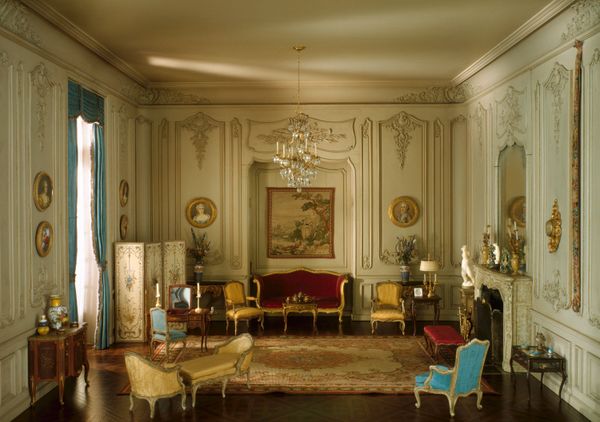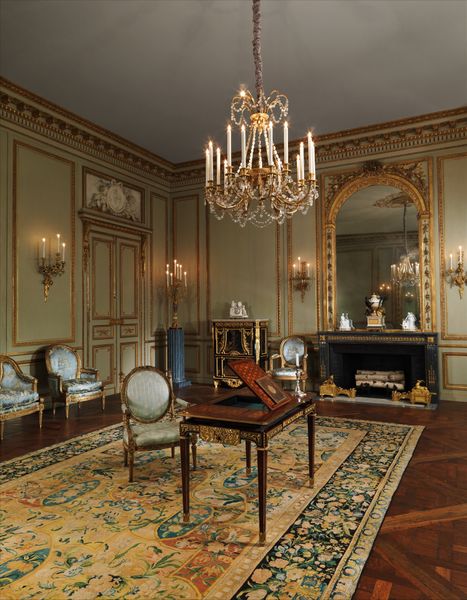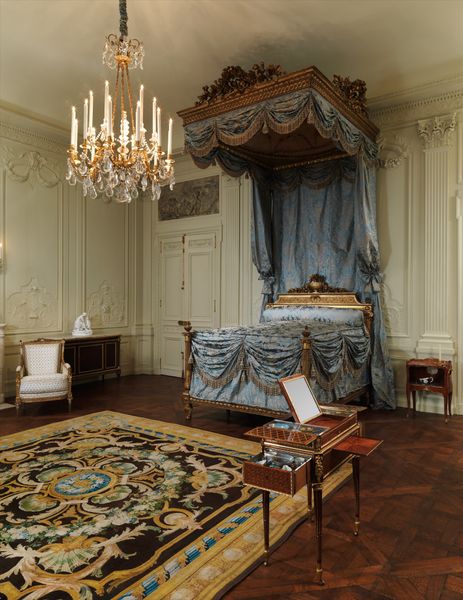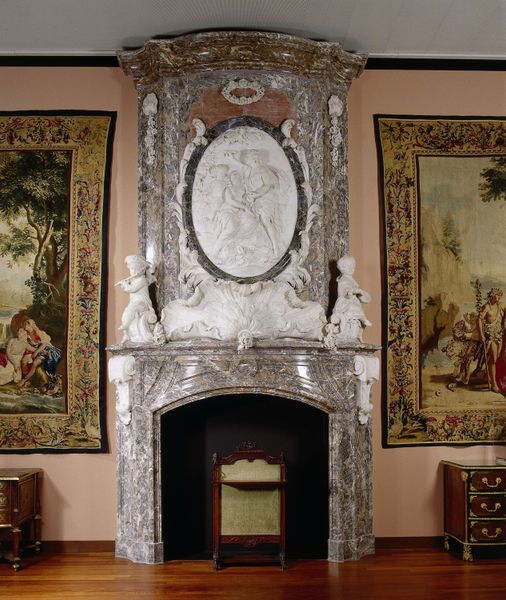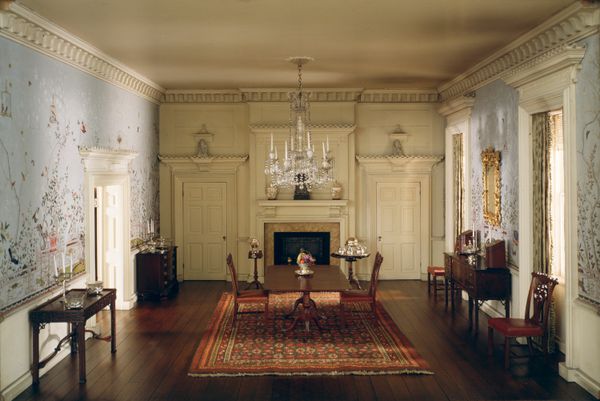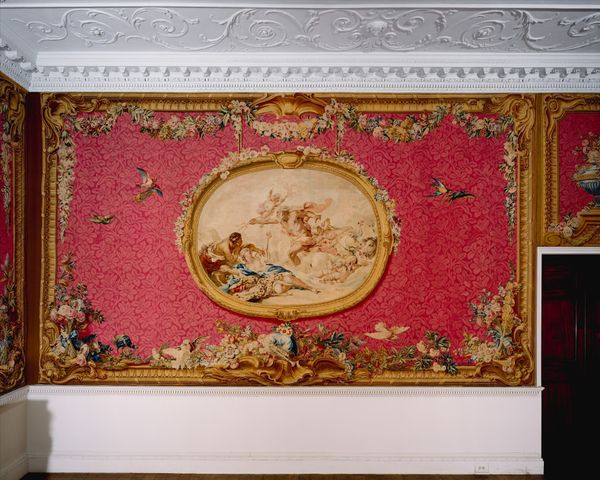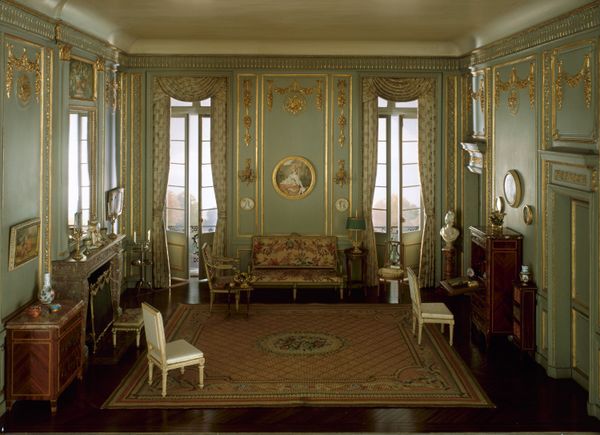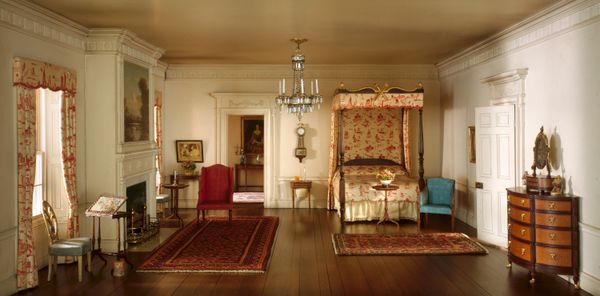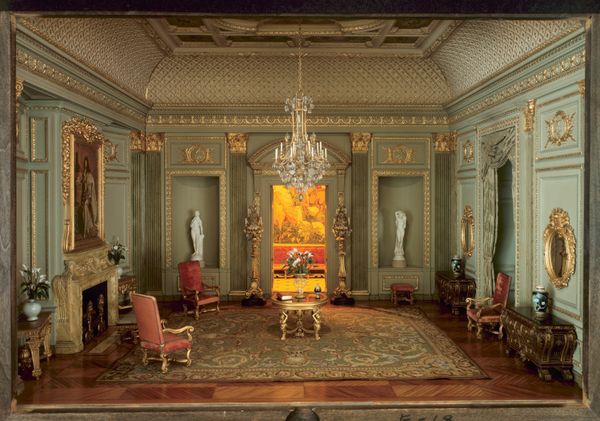
Dimensions: H. 27 ft. 1 in. (825.5 cm), W. 22 ft. 8 in. (690.9 cm), D. 13 ft. 10 3/4 in. (423.5 cm)
Copyright: Public Domain
Editor: We’re looking at the Tapestry Room from Croome Court, crafted between 1763 and 1771 by Robert Adam. Seeing this opulent room transported into a museum feels strange, almost dreamlike. What stands out to you in this intricate textile landscape? Curator: Well, isn't it something? It’s like stepping back in time but also stepping *into* someone's imagination. For me, it's the trompe-l'oeil effect. The tapestries create this illusion of depth and architectural features. Adam blurs the lines between reality and representation. It makes you wonder, doesn’t it, what is truly "real" in this space and in our perception of it? Editor: Absolutely. The way the floral motifs and pastoral scenes flow across the walls is mesmerizing. Was this style typical of interior design at the time? Curator: In some ways, yes, reflecting the taste for classical motifs and symmetry prevalent in the neoclassical period, but Adam takes it a step further. He's not just decorating a room; he’s creating an immersive, almost theatrical experience. Think about the concept of "home" during that period, too. A stage for life and all its performances, hmm? Editor: So, the tapestries were less about practicality and more about conveying status and creating an atmosphere? Curator: Precisely. It's about constructing an idealized vision of country life. I think what's truly interesting is how he weaves in these playful, almost subversive, elements that undermine any sense of rigid formality. It's like he's winking at us, saying, "Don't take it all too seriously, darling!" Don’t you get that feeling? Editor: I do. It's fascinating to think about the layers of meaning embedded in something seemingly decorative. Curator: It does leave one to ponder just what "decorative-art" truly represents as an art form!
Comments
No comments
Be the first to comment and join the conversation on the ultimate creative platform.
